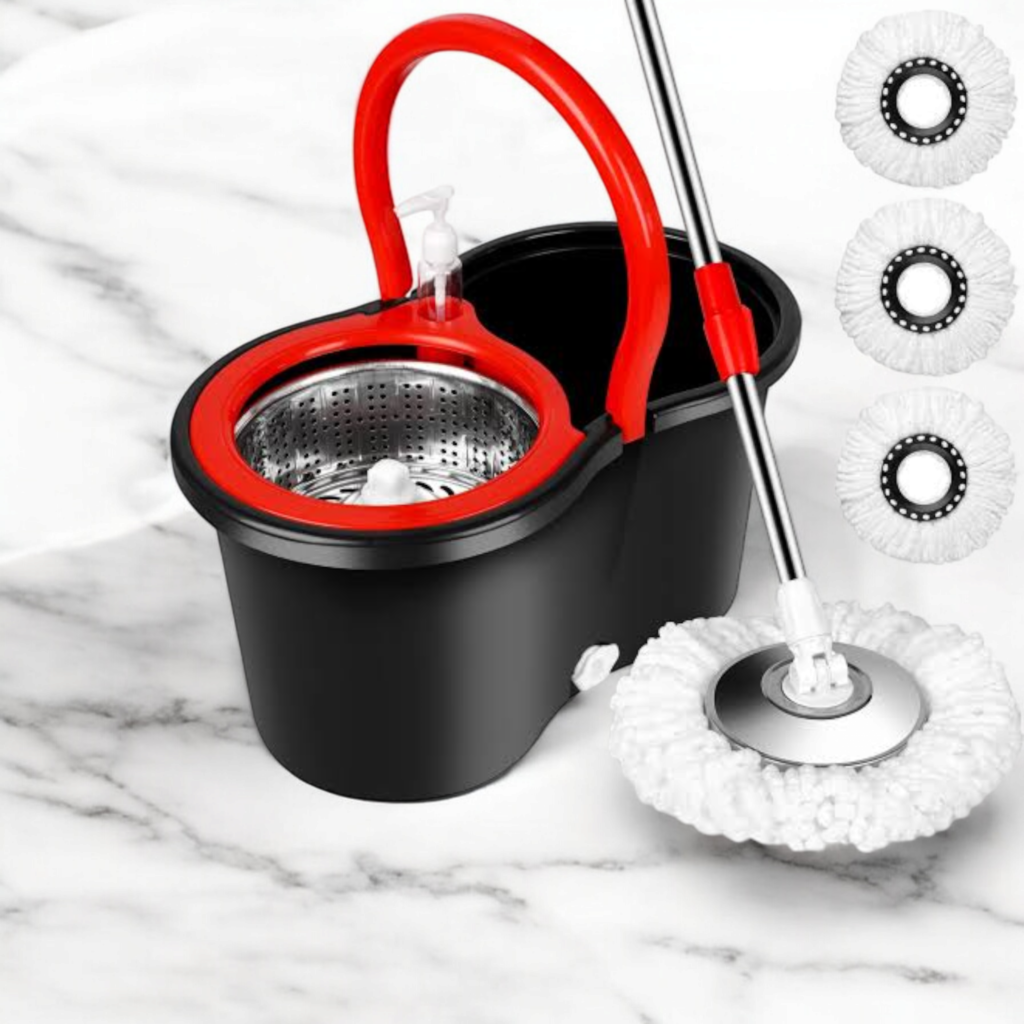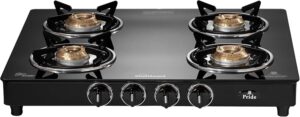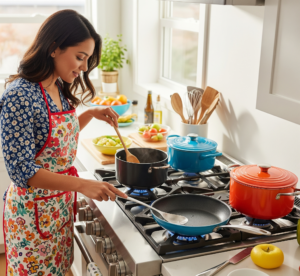Mop with a Bucket
Let’s be real—mopping with a bucket isn’t exactly rocket science, but somehow, we still end up with streaky floors, dirty water splashes, or worse, a backache from doing it all wrong. 😅
I used to think floor cleaning with a mop was just about sloshing water around until things looked clean. Then I learned the hard way—too much water warped my hardwood, and not wringing properly left a sticky residue. Oops.
If you want actually clean floors (without frustration), here’s the no-nonsense guide to mopping with a bucket the right way.

Contents
Why Proper Mopping Matters
Ever walked barefoot on a freshly mopped floor, only to feel grit under your feet? Yeah, me too. Floor cleaning with a mop isn’t just about appearances—it’s about actually removing dirt, bacteria, and grime.
A bad mopping job can:
- Spread dirt instead of removing it
- Leave streaks or sticky residue
- Damage floors with excess water
But when you mop with a bucket correctly? Glide on those socks without fear. ✨
What You’ll Need
Before we dive in, gather these:
✔️ A good mop (microfiber or string—your choice)
✔️ A bucket (two is better—more on that later)
✔️ Warm water
✔️ Floor cleaner (or DIY mix—vinegar + dish soap works!)
✔️ A scrub brush (for stubborn spots)
✔️ Old towels (for drying)
Step 1: Prep Your Floor
You wouldn’t paint over dust, right? The same logic applies to mopping with a bucket.
- Sweep or vacuum first – No amount of mopping will pick up crumbs or pet hair.
- Spot-clean stains – Got a dried spaghetti sauce splatter? Hit it with a scrub brush before mopping.
- Move furniture (if possible) – Or at least mop around it properly.
Pro Tip: If you have a Swiffer, use it for quick pre-mop dusting!
Step 2: Mix the Right Cleaning Solution
Not all floors are created equal. Here’s what works best:
- Hardwood? Skip vinegar—it can damage the finish. Use a wood-safe cleaner.
- Tile or laminate? A mix of warm water + a few drops of dish soap works wonders.
- Vinyl? A splash of white vinegar + water (1:4 ratio) cuts grease without harming the surface.
Avoid bleach unless you’re disinfecting—it can discolor floors over time.
Step 3: Dip & Wring Like a Pro
This is where most people mess up.
- Dip the mop into the bucket, fully submerging it.
- Wring it out HARD – Your mop should be damp, not dripping. Too much water = streaks + potential floor damage.
“But how do I know if it’s wrong enough?”
- Give it a squeeze—if water drips freely, keep wringing.
- For string mops, press against the bucket’s wringer or twist tightly.
Step 4: Mop in Sections (The Secret Trick!)
Instead of wandering around randomly, mop in small sections (like 4×4 ft areas). Here’s why:
✔️ Prevents walking over wet floors (no footprints!)
✔️ Ensures even cleaning
✔️ Makes rinsing easier
Technique matters!
- Push the mop forward in an “S” shape, then pull back.
- Work backward toward an exit so you’re not trapping yourself in a corner.
Step 5: Change Dirty Water (Don’t Skip This!)
That murky gray water isn’t just gross—it’s redepositing dirt onto your floors.
- For large areas, switch water halfway.
- For two bucket fans: One for soapy water, one for rinsing. Dip → rinse → wring → repeat.
“How often should I change it?”
- If the water looks dirty, it’s time for a refresh.
Step 6: Dry for a Streak-Free Shine
Want that “just-cleaned” glow? Dry your floors after mopping.
- Use a microfiber cloth or dry mop.
- For hardwood, this step is non-negotiable—water = warping.
Step 7: Clean Your Mop & Bucket
Otherwise, next time you mop with a bucket, you’re just spreading old grime. 😷
- Rinse the mop head thoroughly.
- Hang to dry (musty mops = bad news).
- Wipe down the bucket with soapy water.
Bonus Tips for Different Floor Types
- Hardwood: Damp mop only! No puddles.
- Tile: A stiff brush helps with grout lines.
- Laminate: Avoid excess water—it seeps into seams.
Common Mopping Mistakes to Avoid
🚫 Using too much cleaner → Leaves residue.
🚫 Not sweeping first → Muddy mop water.
🚫 Letting water sit → Warped floors.
Final Thoughts
Mopping with a bucket isn’t glamorous, but doing it right saves time (and back pain). The key? Less water, more strategy.
Now go forth and mop like you mean it. And hey—if you drop spaghetti again, at least you know how to handle it. 🍝✨



